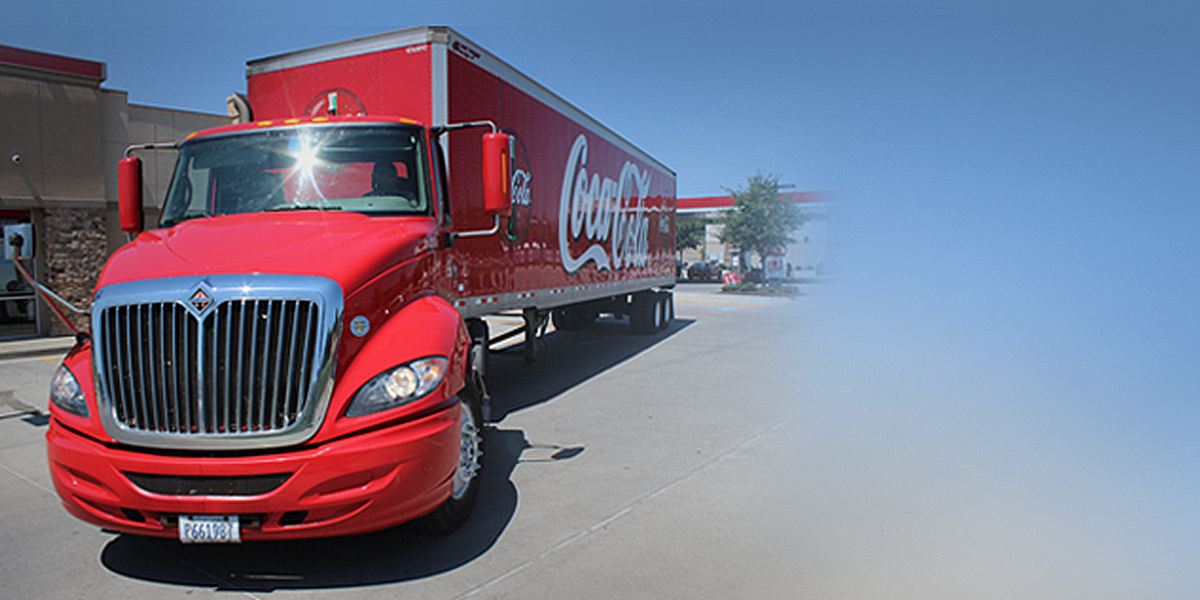
Direct Store Delivery: Optimizing the Road to Success
Ways to improve service levels and supply chain efficiencies

Direct Store Delivery offers distinct advantages to customers of The Coca-Cola Company. CokeSolutions recently spoke with Coca-Cola Refreshments leaders Jay Ard, vice president of the Convenience Retail Channel, and Martha Buffington, vice president of Customer Solutions, who shared the benefits of this delivery method and how convenience retailers can work with The Company to optimize the process.
Could you provide a brief breakdown of the standard ordering and delivery process between you and convenience retailers?
Coca-Cola Refreshments and other Coca-Cola Bottlers use the direct store delivery (DSD) model to deliver to convenience retail customers. In general, an account manager visits the outlet to discuss business building opportunities, checks the in-outlet presentation of our products and writes an order for product replenishment. Typically, within 48 hours, the order is delivered to the store, and the driver merchandises the outlet by stocking the shelves, rotating product and filling the coolers. This process typically happens once a week, but it can be more or less often, depending on shopper demand at the location.
What are some general advantages to DSD for both suppliers and retailers?
Our DSD customers get a professional team supporting both business development and product replenishment. These professionals are dedicated to serving customers with smaller format outlets, and they bring expertise about the brands, packages and promotions that have been successful in the convenience retail channel. DSD also ensures that our products are in stock and properly displayed to drive sales for the retailer.
What are some disadvantages?
DSD can be an expensive route to market for suppliers, but we have the scale to produce a powerful advantage for our convenience retail customers. We are constantly working to improve the efficiency and effectiveness of our sales and product delivery processes so that we can provide the highest level of service.
Why do you continue to utilize DSD for c-stores rather than move to wholesale?
The Coca-Cola Company views the DSD model as a valuable benefit for our convenience retail customers. We have deep expertise in the channel that our account managers bring to their retail counterparts every week. In addition, we have the scale to deliver to outlets frequently enough to ensure that products are in stock and available for shoppers to purchase. The DSD model is preferred for most of our products, but we do use the warehouse route to market for our chilled juice products due to the need for a temperature-controlled supply chain.
Have you made any changes to how you handle distribution in the last five years?
The Coca-Cola Company is continually improving its service capabilities. For example, we are better at predicting demand in order to flex delivery frequency. By being more agile, we are able to improve in-stock rates while optimizing inventory for our customers. Coca-Cola also collaborates with customers that have the capability to send us electronic purchase orders.
How do you foresee the distribution channel evolving in the next five years?
DSD will become more demand-driven through the use of point-of-sale scan data and technology. Sophisticated retailers will be able to provide suppliers with data on real-time sales, on-hand inventory and expected demand. The Coca-Cola Company will use this information to optimize the ordering and delivery process so that the right inventory is delivered and products are kept in stock.
How can suppliers and retailers work together better to improve supply chain efficiencies in the convenience retail channel?
The biggest thing retailers can do to help improve service levels and supply chain efficiency is to provide DSD suppliers with their point-of-sale scan data. The Coca-Cola Company uses this real-time data to become more demand-driven, meaning that orders and deliveries are based on actual shopper pull rather than on forecasts.
What are the greatest impediments to working together?
In the convenience retail channel, the biggest challenge is the availability of good quality data. Suppliers need the data to be available at least daily, with a high level of accuracy and master data integrity. The Coca-Cola Company is making a major investment in the capability to receive, cleanse and use point-of-sale scan data from our customers. We are enthusiastic about partnering with convenience retail customers who understand the value of mutual investment in creating a demand-driven value chain to serve shoppers.